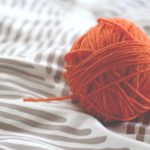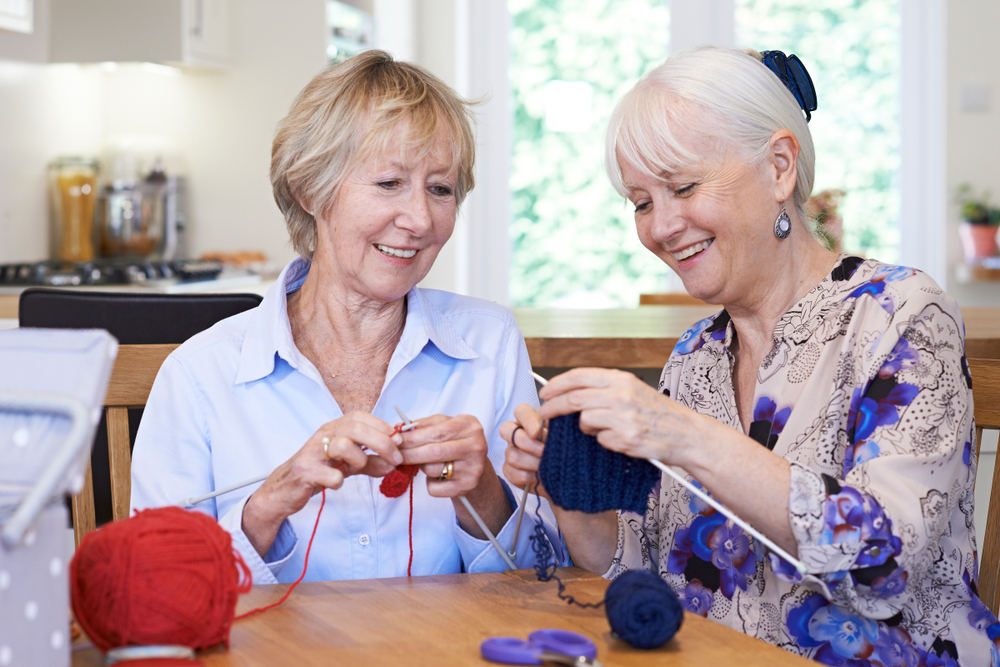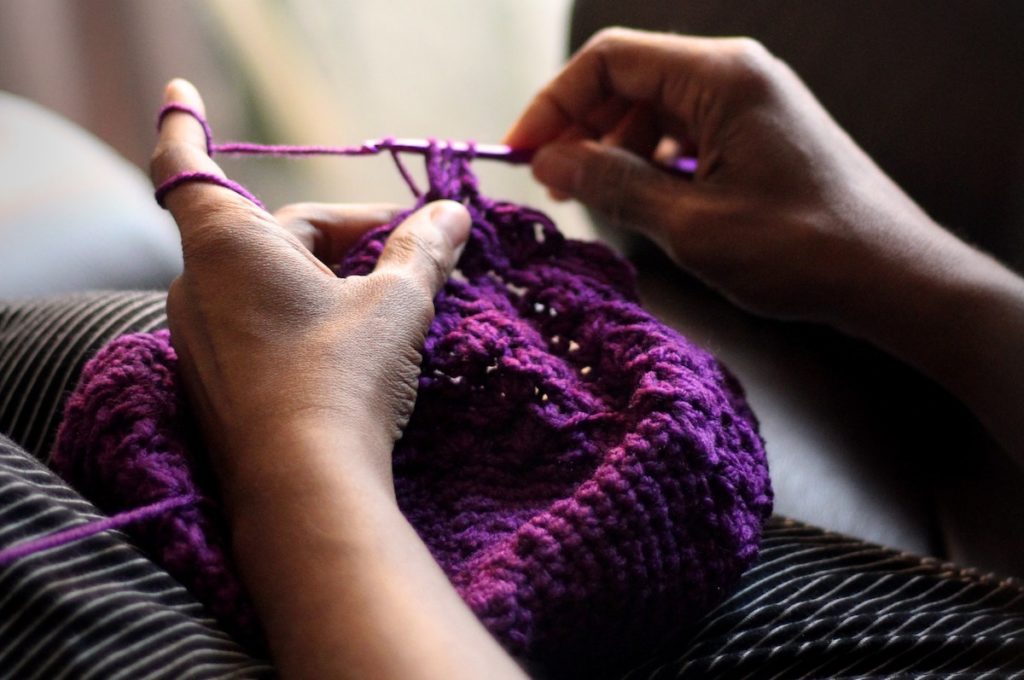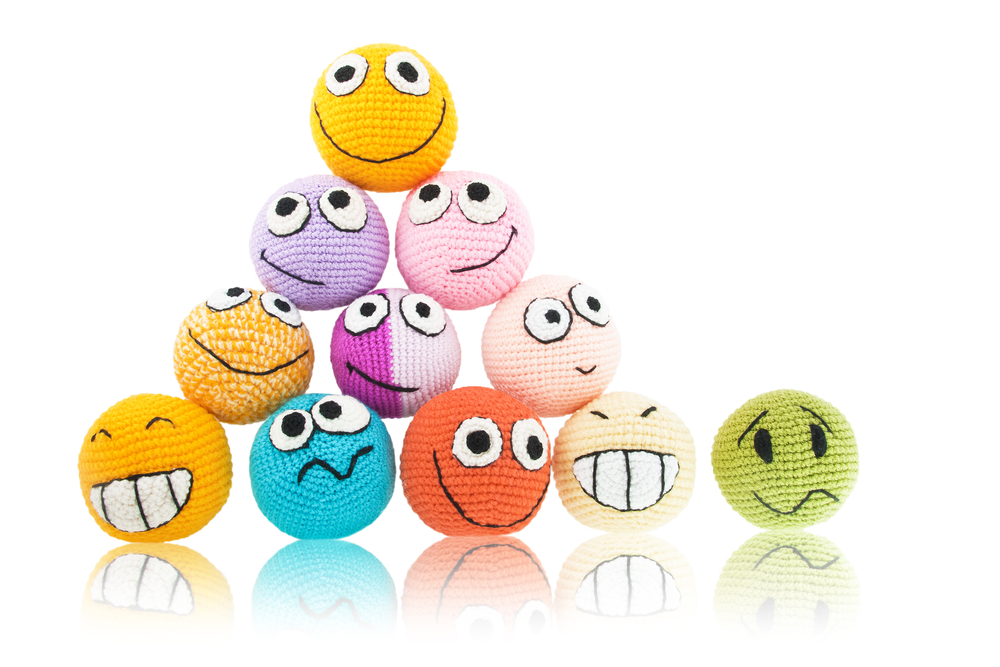
Knitting is a form of creative expression through the manipulation of yarn and combines a range of skills. Lately, a massive internet community has been created for knitters, helping the knitting culture to evolve and be more accessible.
Recent studies have demonstrated that knitting is a low-budget and purposeful activity through which individuals can lower their levels of stress, become creative and recover from illness and trauma (Livingston, 2014; Mascarelli, 2014).
Geda et al. (2011) suggested that craft activities protect against cognitive decline, while Adey (2018) described knitting as “a route to happiness”. The literature also suggests that craft-based occupations have massive benefits for women with long-term physical and chronic disabling conditions, including improved well-being, maintenance of positive identity, and active social interaction (Reynolds & Vivat, 2010; Reynolds & Lim, 2007).
Brooks et al. (2019) examine the perceived benefits of knitting and its role in their life by asking people who self-identified as passionate knitters. The authors explored questions related to (a) the association between the activity and physical, mental, emotional and cognitive health, (b) feelings of happiness and (c) development of identity.

Craft-based activities are associated with relaxation, happiness, socialising and a sense of identity.
Methods
The study followed a qualitative research design informed by phenomenology, including in-depth interviews, observation, attending meetings and discussing preliminary findings with guild members. The sample consisted of 21 participants: 19 women and two men, aged 27 to 84 years old. All participants were Caucasian and the majority were employed, from higher educational background and reported chronic health conditions.
In-depth interviews were conducted at a place of convenience to participants. The questions included:
- Socio-demographic information including age, gender, current health and work status, cultural background and date of arrival in Canada
- Open-ended questions exploring:
- engagement with knitting
- feelings and thoughts about knitting
- explanatory aspects of knitting such as frequency of engagement, place, patterns, reasons for knitting
- perceptions about well-being and identity
Results
Five interrelated, non-hierarchical themes, are described below as phrased by the authors.
Implications for Mental Health and Well-Being: “Knitting Makes Me Happy”
Knitting was described as “therapy”, “soothing meditation” and was highly associated with a greater feeling of emotional health. Knitting needs concentration, thus it acts as a distraction and can take people’s attention away from problems, anxiety, and pain.
“Stress is quite often caused by . . . thoughts and emotions we kind of bottle up or release, depending on the person I guess, but it’s mostly bottled up emotions, and when one knits, you can’t be with those emotions and thoughts because you need to focus on your knitting, so yes, it is a stress reliever.”
Of course, knitting comes with its frustrations and negative physical effects as a result of static postures, but this feelings is always momentary. Positive feelings of calmness and joy overmaster any negative emotion and minor physical symptom. People with lived experience of depression or other mental health difficulties also feel that knitting empowers them to have control.
“It makes me happy. It’s an antidepressant. How’s that for a clinical answer”
Cognitive Health Benefits: “It’s the Mental Challenge I Need”
Knitters described their favourite activity as challenging and stimulating. It promotes learning opportunities and the use of a range of different skills including problem-solving, logic, perceptual skills, technical ability and patience. The most important skill is the mathematical component, which is necessary in order to create a pattern. Knitting has the ability to improve concentration and reduce distractibility. Thus, people felt that knitting can protect them against cognitive decline as they grow older.
“Knitting is very relaxing but also mentally stimulating…. There’s never an end of things to learn…. I’m still learning”.
Social Value of Knitting With Others: “It’s a Hobby That Joins”
No man is an island – the sense of community was a major theme across the interviews. Knitting connects like-minded people and motivates the formation of new relationships.
“It’s almost impossible not to bond with somebody who knits.”
Additionally, the participants talked about the value of knowledge exchange and skills shared. Meeting with other knitters can inspire them, give opportunities to learn new techniques, and be mentored by someone more skilled.
“What you get out of a group context is inspiration, help if you have a problem, good tips, good advice. So that’s what I would say is the big difference [of knitting in groups] is you can bounce ideas off of other people.”
Occupational Identity as Knitter: “I Can’t Imagine a Life Without Knitting”
Knitting forms an identity, a higher sense of self. Long-time knitters feel that knitting shaped them as productive members of the community and is part of their self-image. Subsequently, losing the ability to knit would have a significant negative impact in their life and their identity.
Wrapped up in a sentence:
“I would just feel incapable . . . that I could no longer do this”
Although, this was not a universal experience and a few people didn’t feel knitting is part of who they are – the majority feels satisfied with the result and the products they make.
Knitting as Creative Outlet: “It Reflects My Personality”
The activity is self-exploratory and brings out the creative side of people in the surface – as mentioned “enfolding the “whole person” into a creative state”. The participants talked about the joy of playing with colours and choosing materials and patterns. Some people feel that the selection of colours represent their mood and feelings.
“Knitting reflects who I am because I like to pick things that are creative in the sense that . . . I get to play with colours. So I like to think that my knitting is lively, and it reflects my personality because I like to learn new things and I like to get better at something.”

This qualitative study suggests that knitting is viewed by people who knit as beneficial to mental, emotional and cognitive health, as well as a good way for people to connect.
Conclusions
“Avid knitters” described knitting as therapeutic and self-nurturing. Overall, they feel that knitting not only stimulates their brain and put it in good use, but also helps them develop new skills and enhance existed ones. Let’s not forget that knitting is a creative form of expression, which according to the participants of this study has the power to alleviate daily stress.
Strengths and limitations
As a massive fan of qualitative studies, I will highlight some of the strengths of this study:
- The data were collected through multiple qualitative methods including in-depth qualitative interviews, observation, participation in guild meetings and discussion with knitters.
- Let’s keep in mind that most qualitative studies focus on 10-15 people, while this study had a larger number of participants (21 in total), which also varied by ages, abilities and cultural backgrounds.
- The final analysis was supported by structured discussions among research members and observation of skilled craftsmen meetings.
Some limitations need to be mentioned:
- Results may not be generalisable to people engaging with the activity at a slower pace – the participants named themselves “passionate knitters”, so this title may limit the applicability of meanings attributed to knitting.
- The study included only two male participants and the authors acknowledge that the themes might have been different if more male participants were involved.
- The outcomes did not focus on the interrelationship between culture and knitting.

Knitting lovers highlighted the therapeutic value of knitting, which was facilitated by the qualitative nature of this study.
Implications for research and practice
This study is an addition to the body of literature and highlights the role of occupational therapy. The qualitative data can act as a stepping-stone for future evidence-based research to explore longitudinal associations between cognitive decline and knitting. Furthermore, focusing on prevention: what if knitting can help protect us from depression, anxiety, dementia, and other illnesses? Evidence on that could lead to early prevention strategies and participation from a younger age.
Brooks et al. (2019) surely convinced me to try knitting. I always admired knitters’ patience and levels of concentration, having a single goal, a colourful pattern. Still not convinced?

Quantitative research using large datasets is crucial to understanding the long-term benefits (and harms) of knitting.
Conflicts of interest
None.
Links
Primary paper
Brooks, L., Ta, K., Townsend, A., & Backman, C. (2019). “I just love it”: Avid knitters describe health and well-being through occupation. Canadian Journal Of Occupational Therapy, 86(2), 114-124. doi: 10.1177/0008417419831401
Other references
Adey, K. L. (2018). Understanding why women knit: Finding creativity and flow. Textile, 16, 8497. doi:10.1080/1475976.2017.136748
Livingston, M. (2014, April 21). At prison, a knitting class that isn’t necessarily about knitting. The Washington Post. Retrieved from http://www.washingtonpost.com/local/2014/04/24/a814362a- ae0e-11e3a49e76adc9210f19_story.html
Mascarelli, A. (2014, April 21). Might crafts such as knitting offer long-term health benefits? The Washington Post. Retrieved from http://knittingguild.ca/pdfs/health.pdf
Geda, Y., Topazian, H., Roberts, L., Knopman, D., Pankratz, V., . . . Petersen, R. (2011). Engaging in cognitive activities, aging, and mild cognitive impairment: A population-based study. Journal of Neuropsychiatry and Clinical Neuroscience, 23, 149–154. doi:10. 1176/jnp.23.2.jnp149
Reynolds, F., & Lim, K. (2007). Turning to art as a positive way of living with cancer: A qualitative study of personal motives and contextual influences. Journal of Positive Psychology, 2, 66–75. doi:10.1080/17439760601083839
Reynolds, F., & Vivat, B. (2010). Art-making and identity work: A qualitative study of women living with chronic fatigue syndrome/myalgic encephalomyelitis (CFS/ME). Arts & Health, 2, 67–80. doi:10.1080/17533010903495306

As an avid and passionate knitter, I object to the fact that two of the images in this article show crochet instead of knitting. I love crochet as well, but that’s not what the study was about.
Exactly! Reporters need to DO their homework before utilizing data. These types of reports are supposed to be educational and it urks me when reporters don’t, first, educate themselves on the subject before trying to educate others with their findings. *_*